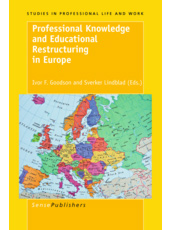Professional Knowledge and Educational Restructuring in Europe
Developing a Conceptual Framework for Understanding
According to the diffusion model, the adoption of ideas, concepts and standards over wide territories can be explained by reference to the ways in which they have, or have not, gained acceptance within some groups of people. This means that disseminated objects also risks to be neglected and met with resistance from local actors or, alternatively, transformed into new meanings which change the intention of the whole operation and makes it a failure. However, the model presuppose that disseminated objects do have specific identities and origins and also that they have some specific destiny of possible trajectories; it may e.g. be easy to understand the success of the Xray in view of its superior functionality or, reversely, to understand the failure of Betamax (a video recorder) on basis of the power of its competing variants the VHS.
In both cases, any objection to the success/failure of the objects would be a sign of explainable circumstances in qualities and/or surroundings.
In contrast, and according to the translation model’, the identities and origins of the disseminated objects are always uncertain and always in the hands of humans, who each and everyone can act in different ways; use it, modify it, ignore it, betray it etc. Whatever will happen to the dissemination it will transform, i.e. be translated and take a form or a meaning it didn’t have before. This makes each enactment of an idea or standard a part of its constitution and translation must be understood according to the changes of translators as well as to changes of what is translated (see Latour; 1990, Czarniawska & Sevon, 2005). According to the translation model, whatever the destiny of the dissemination will be, it will be a result of some collective action and never a reason for it?
In the understanding of education restructuring as a world movement these two models of dissemination will make a difference. The diffusion model will understand and explain varieties in use and meanings of disseminated objects (ideas, models, artefacts) by references to the powers of its disseminating actors and recipients (mediums) and will give privilege to such analytical categories as nations, institutions, professions and classes. The translation model will, on the other hand, put us in the different position of having to explain the varieties of the disseminated objects by references to the specificities of their embodiments and translations - and will by this also widen the categories of actors. Within this model, mediators become now also surprisingly unreliable in terms of outcomes as it will most likely and most often involve complex chains of mediators and translations.
With reference to the Profknow project, we will use these two models as a way to exemplify, discuss and make some concluding remarks about education restructuring as a world movement. In the next section we will present a brief overview of the world movement argument in relation to the issue of education restructuring and try to clarify some problems as well as some promising hypothesis that we think it gives rise to.
